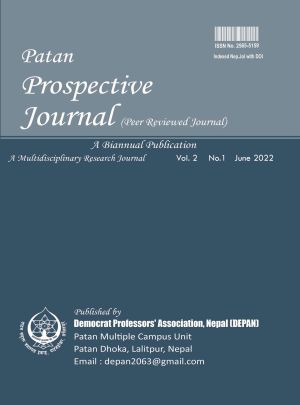Factors Responsible for the Decline Contraceptive Prevalence rate in Nepal
DOI:
https://doi.org/10.3126/ppj.v2i1.48129Keywords:
Family planning, traditional method, abortion, emergency contraception, prevalence rateAbstract
This study is based on the factors responsible for the decline in the use of contraceptives in Nepal since 2006. The main objective of this study is to identify potentially responsible factors contributing to the reduction of CPR in Nepal. This study is based on a secondary resource. For the purpose of this study, data and information has been collected from various sources such as demographic and health survey reports, published national and international articles and reports in related contexts. The Family Planning Program is a priority program of the Government of Nepal, established with the objective of ensuring that individuals and couples fulfill their reproductive needs and rights using quality family planning methods based on voluntarily informed choices. The use of temporary contraceptives in Nepal has not increased over the past few years and has remained stable rate since 2011 and 2016. This does not mean an overall decline in the prevalence of contraceptives because of the prevalence rate of any method of contraception has increased (53%) in 2016 from 50 percent in 2011 and 48 percent in 2006. Since 2006, the uses percentage of modern contraceptive methods has not increased, this study is focused on the causes of low or stable contraception rate. Still, the current supply of contraceptives has not able to meet the high demand of contraceptive users. The demand for contraceptives was 67 percent in 2016.The reasons for the decline in contraceptives in Nepal could be (a) Spousal Separation (especially in the reproductive age group), (b) increasing use of traditional methods, (c) legalization of abortion and (d) use of emergency contraception. Results show that 47 percent of married women discontinued the use of family planning methods because of their husband being away from home. Similarly, 9.8 percent of married women were traditional method users. After the legalization of abortion, the number of abortions has been gradually increasing over the year and the use of emergency contraceptive pills is also increasing day by day.




